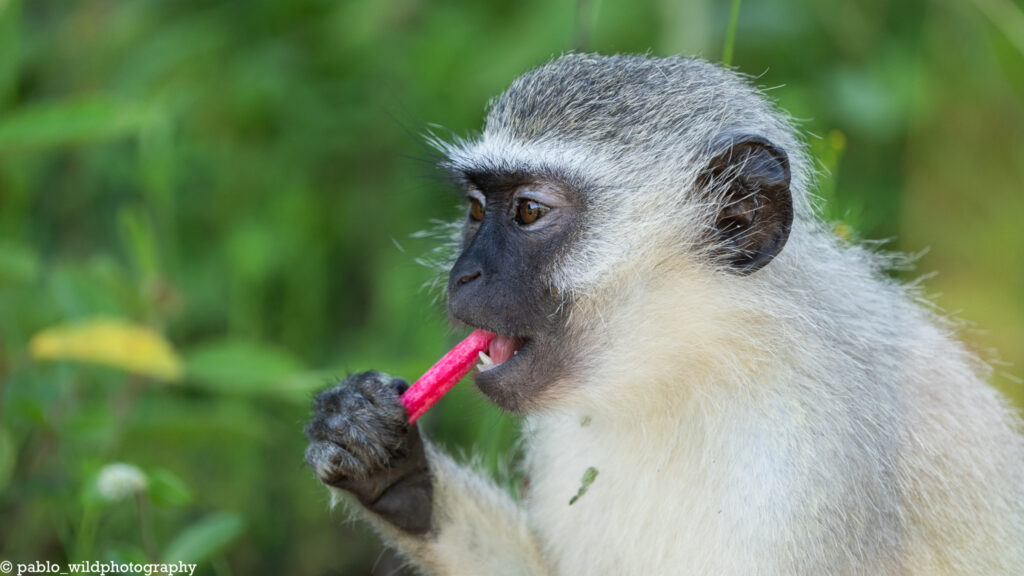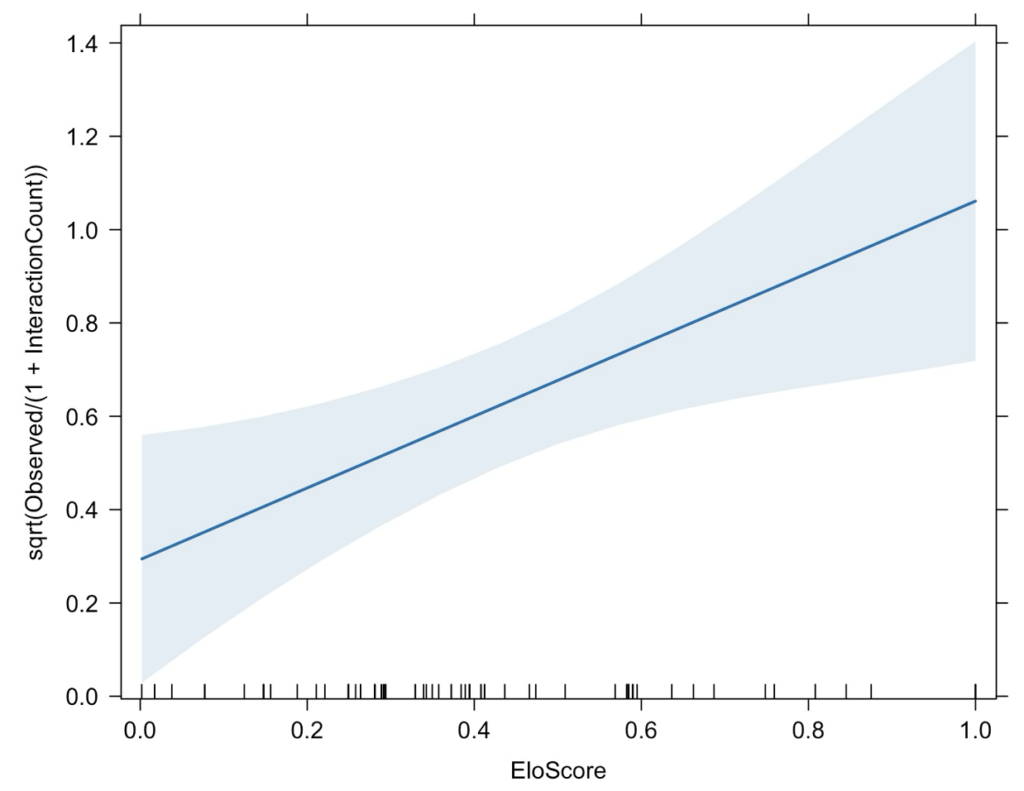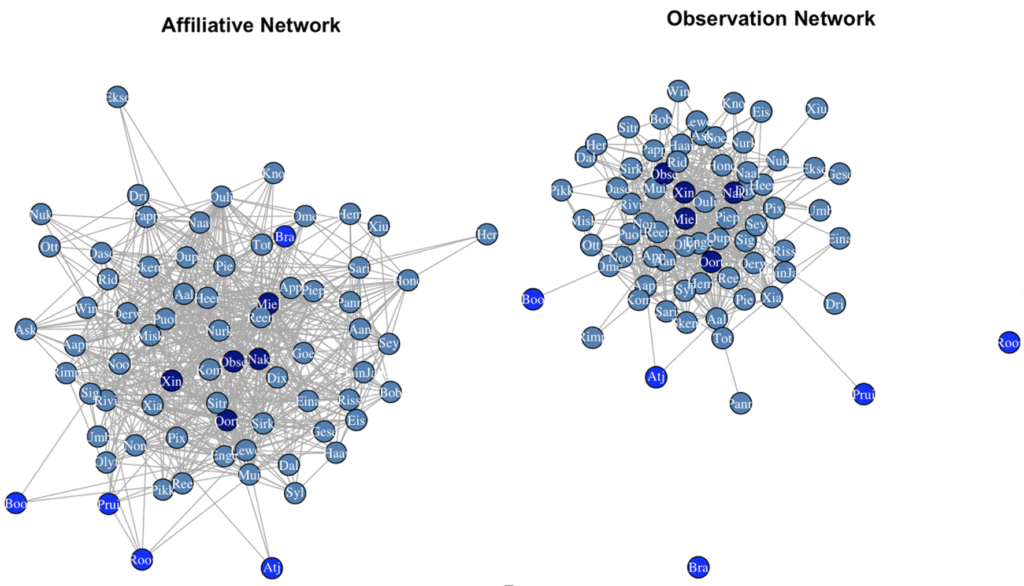Saliva sampling
Did it work ?
YES ! Saliva was collected successfully from 40 individuals, more than 55% of the troop! Monkeys from every age category and sex were sampled for a total of over 250 samples.

Who came to bite ?

HabituationScore was the strongest predictor in my first model.
We can in fact see in this scatter plot that very habituated monkeys, with a score closer to zero, came to interact with the set-up much more than shy individuals, with a score closer to 10.
Age, Sex and Rank did not show significant effects on the number of times an individual came to interact with the set-up.
Social learning
Who are the demonstrators ?
My second model that focused on the effects of rank, age and sex on the number of times a monkey was observed during the presentations, relatively to the number of times it came to interact with the set up showed that only rank predicted the number of times an individuals was observed.
As we can see on this effect plot, an increase in EloScore was met with an increase in the number of times such individual was observed. This reveals a rank bias towards higher ranked individuals.

Who observes who ?

The results of the Mantel test I performed to assess for the similarities between my observational and affiliative networks revealed a significant positive relationship between the two.
As we can see on these sociograms representing both networks, individuals occupy rather similar positions in the troop, with central monkeys based on affiliation being also the ones that were more implicated in observations during the swab presentations.